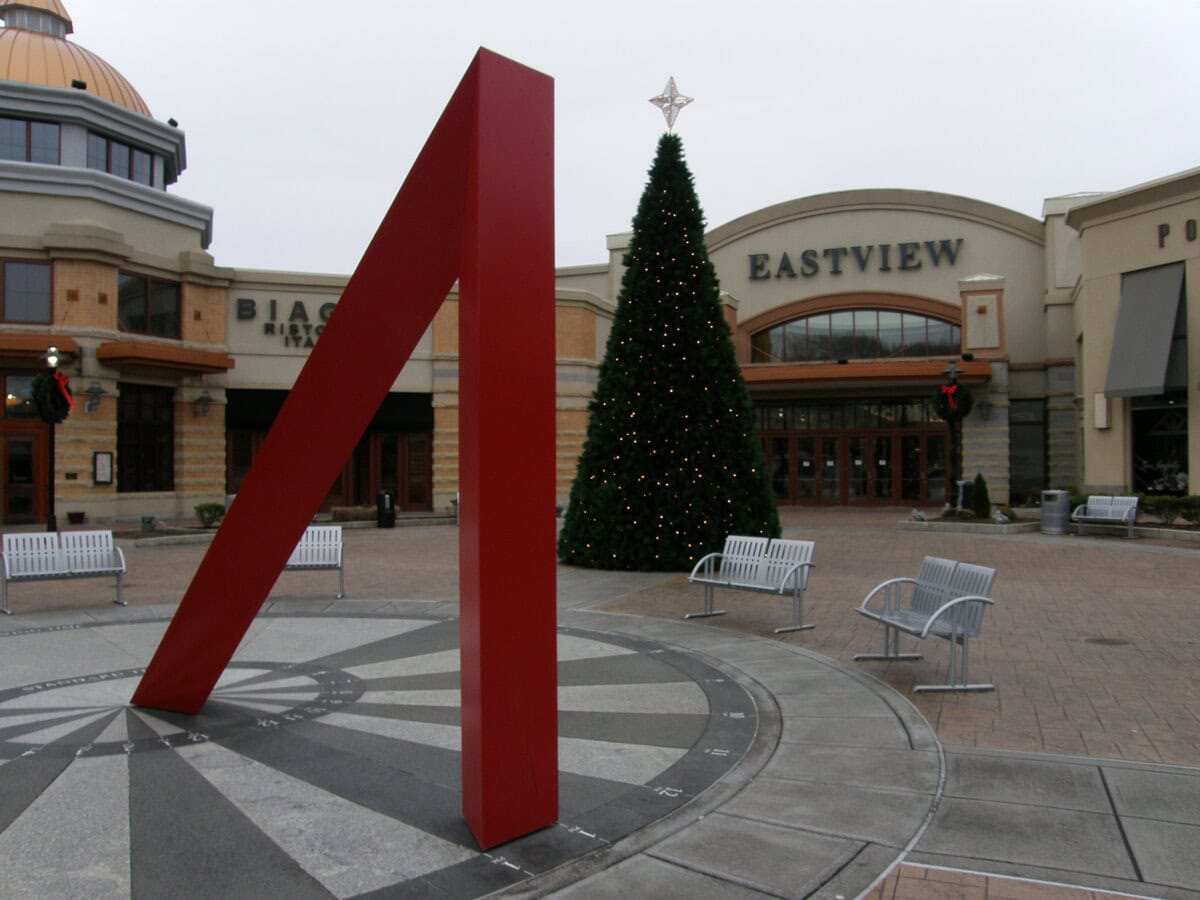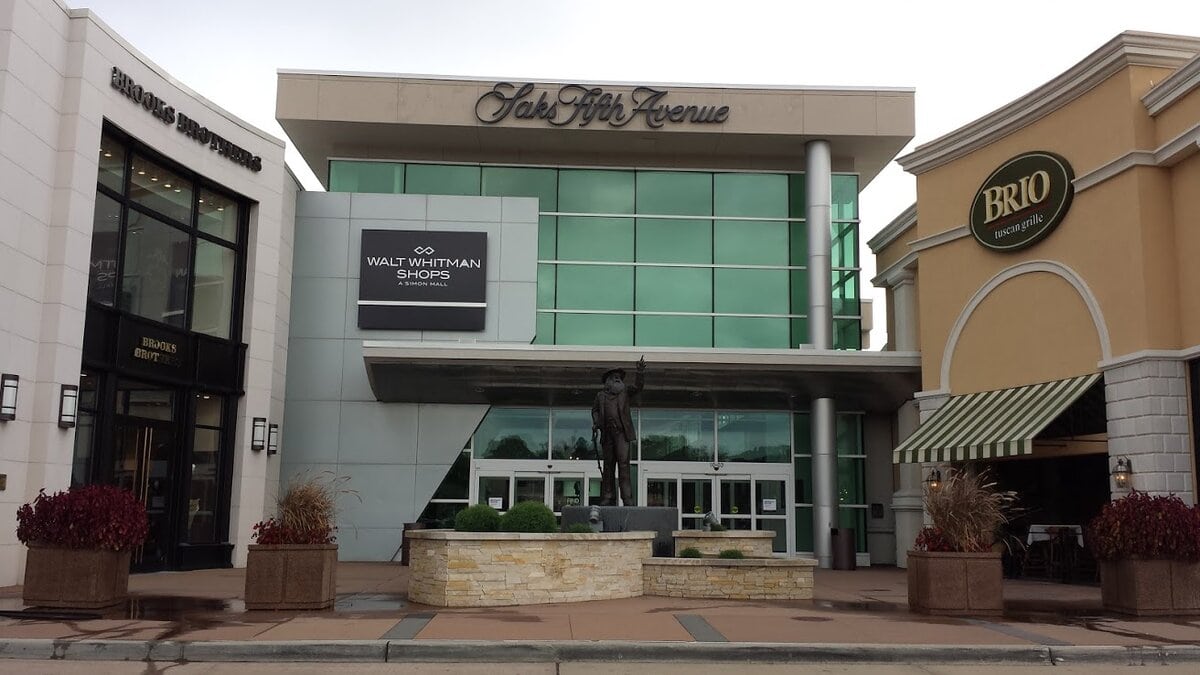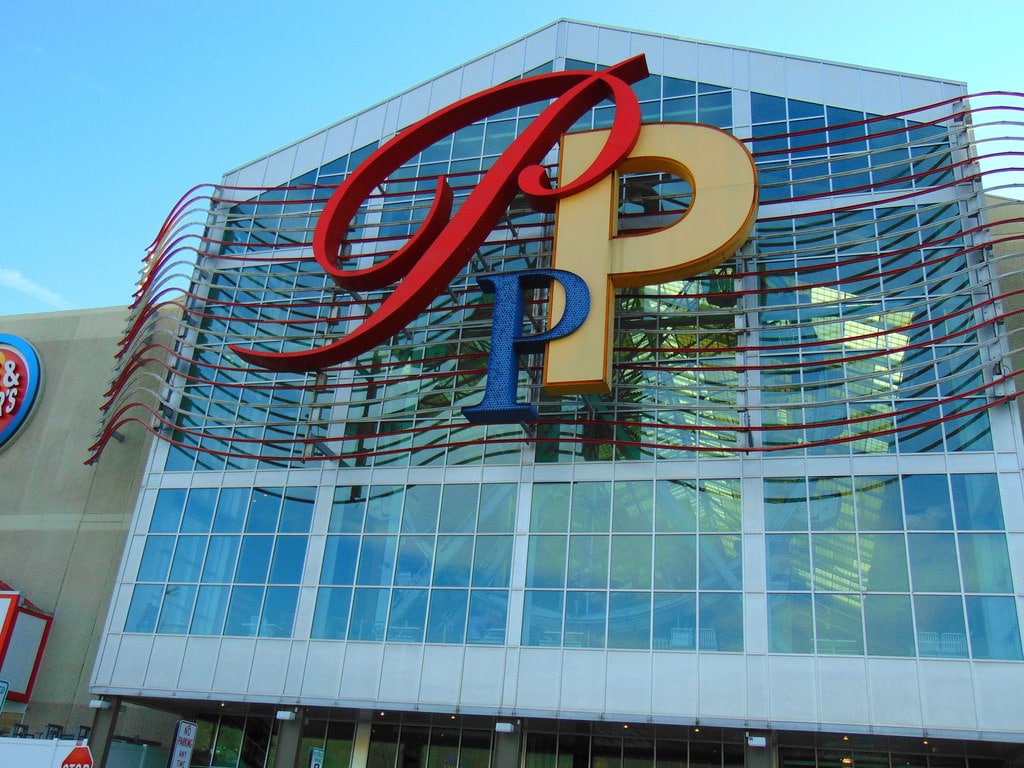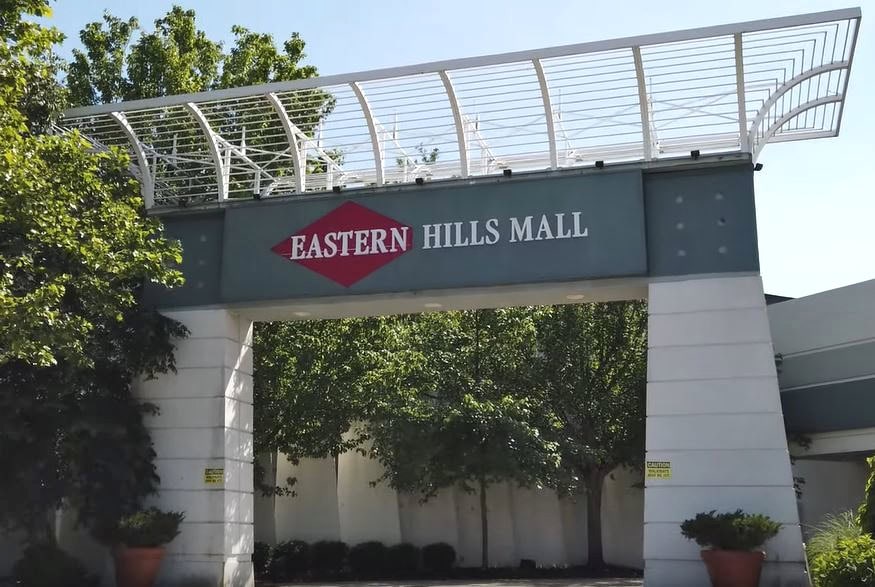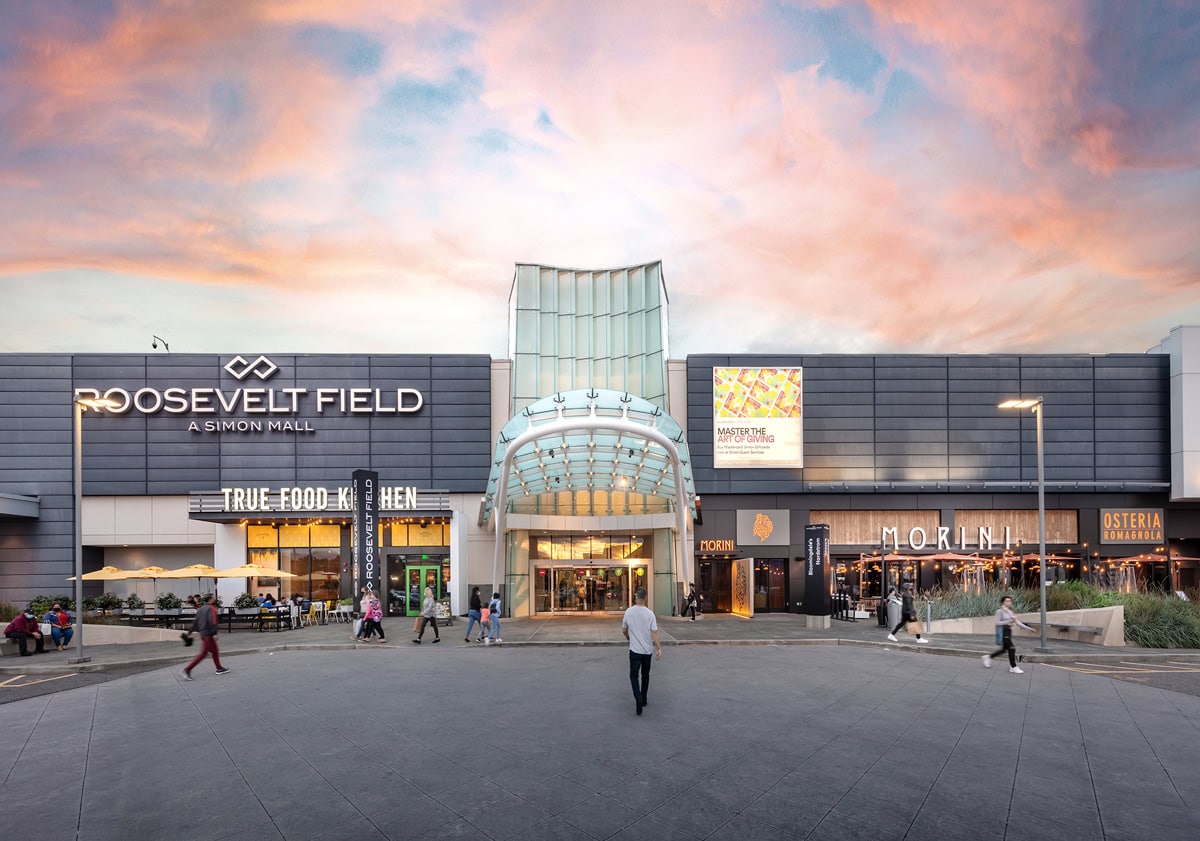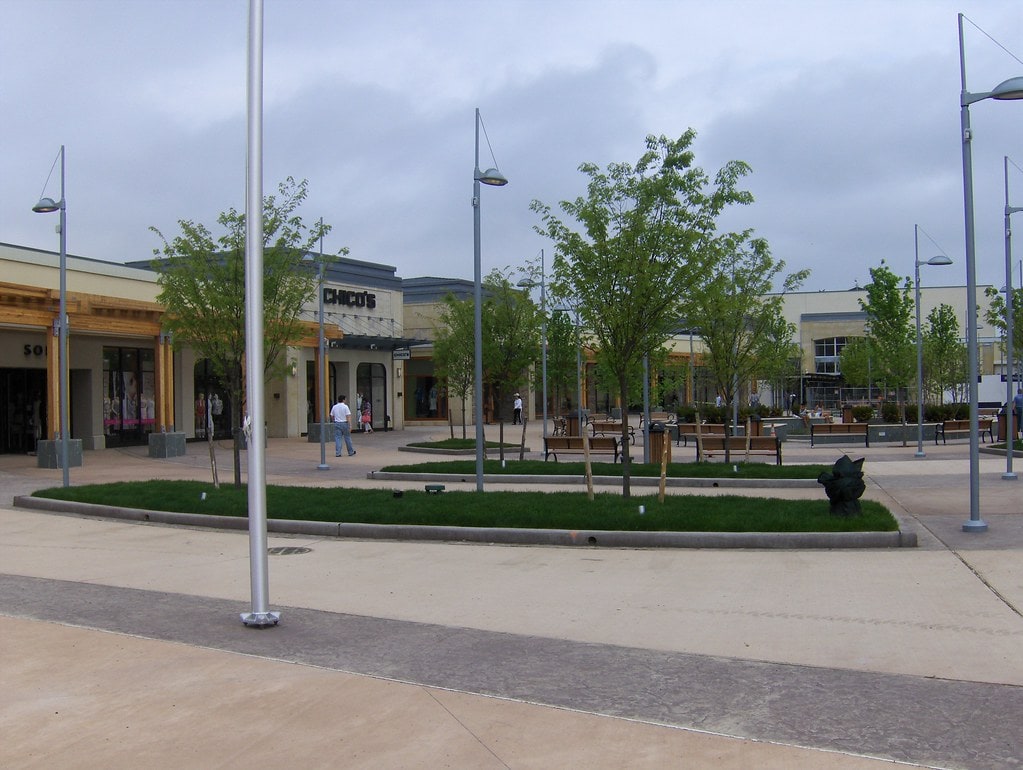The Way Things Opened
August 4, 1980. The Galleria at White Plains opened its doors with two escalators humming, blue-green-yellow-red floor stripes underfoot, and anchor banners in place. Abraham & Straus ran one end. JCPenney ran the other.
A four-level, 900,000-square-foot complex built across two former urban renewal blocks, with Martin Luther King Jr. Boulevard tunneling beneath and a two-block parking structure bolted right on.
Shoppers came from across Westchester, tracing the Bee-Line bus schedules and Metro-North timetables.
The elevator in the center court was still new enough to shine. And for a few hours that afternoon, downtown White Plains looked built to last.
Leasing Dirt
Canadian developer Cadillac Fairview started with cleared land and timing.
White Plains had finished demolishing its postwar "slums" by the mid-70s, but much of the city-owned grid sat idle.
The Canadian developer, already testing the Galleria model in Fort Lauderdale and Sherman Oaks, committed to building across two full city blocks near Main Street.
Construction began in 1978.
They ran steel columns above Martin Luther King Jr. Boulevard, set retail corridors over it, then wrapped parking decks to the north and south.
The layout connected directly to the Bee-Line's route 20 and Metro-North's station stops, which meant mall traffic could arrive without touching a steering wheel.
Abraham & Straus opened at launch. JCPenney joined across the structure.
Street Level wore blue. Garden Level wore green. Yellow marked the food court.
Red pointed to Fashion 1 and 2. Every floor is aligned with the parking deck. The original directory listed 85 stores.
Tenant Mix and Renovation Cycles
By the early 1990s, the Galleria's retail stack was already turning over.
Abraham & Straus shut down in 1995. Stern's moved in fast, but only lasted about a year before Macy's took over the east anchor spot in July 1996.
JCPenney, meanwhile, had announced its departure in early 2001 and closed on April 28 that same year.
The west anchor sat empty until August 2003, when Sears arrived, filling space but not drawing the same crowds.
In between those turnovers, the mall tried reworking its look.
The waterfall and stage in the center court were taken out during the mid-90s renovation.
Two small fountains took their place. The glass elevator, the original one, stayed. Most other original details didn't.
New flooring, modern signage, and brighter lighting came in, but the changes felt more cosmetic than structural.
Retailers like Forever 21, H&M, and Blink Fitness filled mid-sized units through the 2000s.
H&M opened in 2001, shuttered, then reopened in 2014.
Shoppers got used to seeing familiar brands swap in and out while mall leasing teams pushed to keep square footage active.
Food court stalls flipped more often. The buzz thinned, but the concourse never fully emptied.
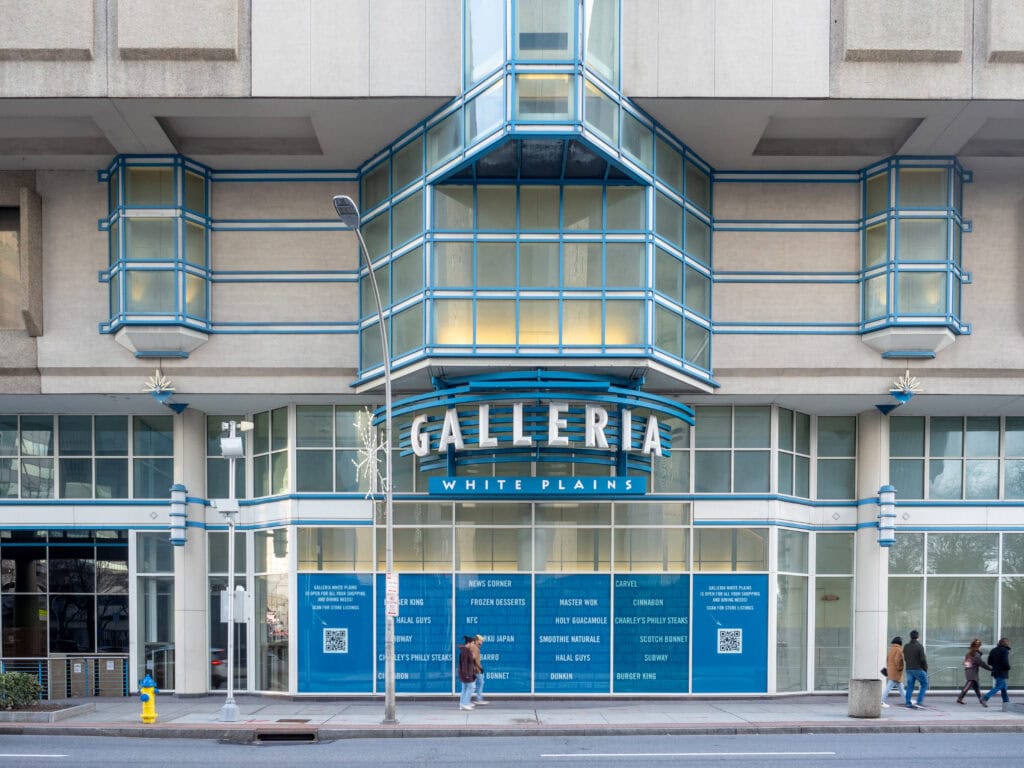
Market Pressures and Regional Competition
The Westchester opened in 1995 and changed everything.
Just a few blocks away, its slate of high-end retailers and polished layout pulled from the same commuter base Galleria at White Plains relied on.
Then came The Source at White Plains. Galleria's leaseholders started facing tougher comparisons.
Lower lease rates helped for a while, but foot traffic began to drift. By 2006, the cracks had widened.
The Philip Grant case that year, tied to a 2005 stabbing in the Galleria at White Plains parking structure, gave the press an easy narrative.
Headlines didn't mention that Martin Luther King Jr. Boulevard ran directly beneath the mall's floors or that the property's surveillance had been upgraded years earlier.
But perception stuck. Parking garage safety became a problem that mall management had to address in every tenant renewal meeting.
By 2010, some corridors had more security than staffing.
Retailers turned over faster, particularly in the junior anchor slots.
The two-story Claire's stayed. So did GNC and Jimmy Jazz. But newer names didn't always last.
Footwear, optical chains, and jewelry shops filled in gaps until leases ran out or chains folded nationally.
The mall wasn't empty, but parts of it started feeling paused.
Traffic on Main Street kept moving, but fewer people stepped in.
Anchor Turnover and Lease Collapse
Sears announced its closure on November 10, 2020. Two floors were emptied in phases, starting with large-format apparel and appliance sections.
By early 2021, only a few lights stayed on past 6 p.m.
Across the building, Macy's followed with a press release on January 5, 2021.
The parent company named White Plains as one of the lower-performing locations in its national restructuring.
Clearance signs went up the same week. By March, both anchor spots were gone.
The vacancy put pressure on smaller retailers. Without anchors drawing consistent traffic, lease renewals started slowing.
Units near the old Macy's entrance stayed dark longer.
National chains thinned out, Rainbow, Famous Footwear, LensCrafters, Jimmy Jazz.
Some held out through the end. Claire's and Lids stayed open through winter 2023.
Others like Kay Jewelers and GNC shut without notice, their signs still hanging days after the gates rolled down.
Blink Fitness managed to keep its location open longer, but foot traffic in the corridors never returned to 2010 levels.
Escalators still ran, but mostly for maintenance crews.
Retail square footage sat unused. Pacific Retail Capital Partners managed the mall by that point, but leasing momentum was gone.
Most storefronts were clean, lit, and empty.
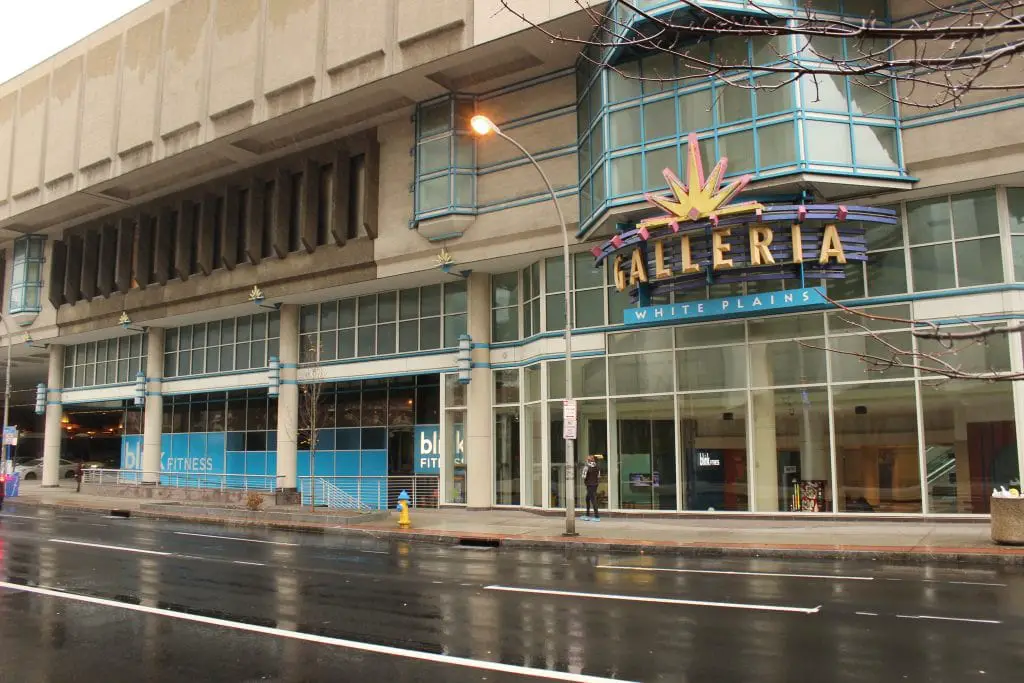
Investment Pivot and Redevelopment Push
In November 2022, Pacific Retail Capital Partners confirmed the shift.
The Galleria's property was being prepped for full redevelopment.
Farallon Capital Management and Cappelli Organization signed on as co-developers.
The new plan called for a multi-phase, mixed-use buildout, residential units, retail, green space, and public access corridors.
The name: District Galleria.
December 21, 2022, marked the public closure notice.
Flyers circulated in-store, and a formal press notice set the final day as March 31, 2023.
The last tenant leases were month-to-month by then.
Most shops took their stock out by mid-March, a few held clearance sales till the end.
Mall directories still listed nearly 30 units, but fewer than 12 were staffed daily.
Development plans showed 3.6 million square feet of mixed-use space across seven new buildings.
Green tech integration was emphasized in early drafts.
A 1,200-foot garden promenade was proposed to cut across the site, with retail and residential structures integrated into towers.
The city zoning board reviewed a TD-2 rezoning proposal.
Environmental review documents were logged into the public record in early January 2025.
Zoning Files and Long Meetings
By January 2025, public meetings about the Galleria at White Plains site had moved to the second floor of City Hall.
People came with notebooks, diagrams, and, in some cases, decades of frustration.
The plan on the table: rezone the 900,000-square-foot mall footprint from B-6 to TD-2, clearing the way for residential towers, a public plaza, and what developers kept calling "mixed-use retail," though no leases had been mentioned.
Maps showed seven new buildings. One diagram outlined a 1,200-foot greenway with benches and tree pits.
Speakers asked about building heights, setbacks, and utility loads.
Film Crews and Final Light
The Galleria at White Plains had already closed when the production vans pulled up in May 2023.
"Generation Loss," an experimental horror series that leaned hard on analog fuzz and VHS decay, was looking for a mall that hadn't been dressed up.
They got what they came for. Blank storefronts, working escalators, untouched signage, and polished tile that hadn't been stripped yet.
The glass elevator still ran if someone knew where the override was.
Filming stayed mostly on the main level.
The team lit scenes with portable rigs, dragging cables through old dining areas and setting up along walkways where Jimmy Jazz and Lids signs still hung.
No props were added. They didn't have to. GNC still had decals in the window. Claire's shelving stood, half-emptied.
This wasn't the first time. "Eighth Grade" had used parts of the interior in 2018, keeping the camera low and the mood quiet.
"Somewhere in Queens" was filmed there in 2022, though not for long.
Nobody painted over anything. They just framed what was already fading.
During one recording, someone kicked power back onto the escalator near Macy's.
It groaned once and ran. The elevator hummed open. Lights blinked on across one half of the food court, and then held.
🍀


